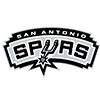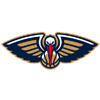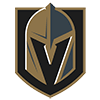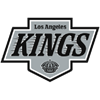One of the worst feelings in fantasy football is to lose a starting running back to injury and not have a quality backup to take his place in the lineup. This is why savvy fantasy managers utilize a handcuff approach at the running back position.
This approach serves as an insurance policy against that type of injury impact. It does require some extra planning and has some potential downsides, but in general has proven to be a very popular roster building method and effective fantasy draft strategy.
What Is Handcuffing in Fantasy Football?
A handcuff is when a manager rosters the starting and backup running back (or running backs in some cases) from a single NFL team. With this method, if the starting running back gets injured, the manager can then just slot the backup running back into his NFL starting lineup. It's a great and usually low-cost way of providing an insurance policy to one of the most important positions on a fantasy roster.
Running backs are the focus here because this position is hit with more injuries than any other position. This is far from the only insurance method one can use, as some managers prefer to roster multiple backup RBs so that they have a greater chance of benefitting from injury-related upside. When running a fantasy football mock draft, you can practice this approach to gauge when handcuffs are typically slotted.
High-Value Handcuffs to Know This Season
One way to outline potential handcuffs is by breaking them down by likely workload levels, and you can do so through the tools provided in RotoWire's draft kit. The best options are platoon backfields where the workload is basically split down the middle, but where one RB is a 1A and the other is a 1B.
Those RBs tend to be very undervalued in both the fantasy football rankings and by managers because they are perceived to be backups. Options here this year include Detroit's David Montgomery, Jacksonville's Tank Bigsby, New England's Rhamondre Stevenson and the New York Giants' Cam Skattebo.
Next up are backups behind lead backs. They will get some work throughout the year and have dibs on the starting role in case of injury. Candidates here include the New York Jets' Braelon Allen, Seattle's Zach Charbonnet and Tampa Bay's Rachaad White.
You can also go for committee backs or backups on the waiver wire in certain leagues. A good example here might be Miami's Ollie Gordon II given the many potential paths to success he has.
When to Handcuff Running Backs
It's always a good idea to consider handcuffing every running back on a fantasy roster. In some cases, the draft day price will be so low that the handcuff decision pretty much makes itself. A good draft assistant tool can help guide you in those decisions. It's also more common to see handcuff situations in deeper leagues since it is more difficult to build roster depth in those leagues.
It isn't as common to see handcuff running backs in 8-team leagues since there is plenty of quality depth available on waivers in that league size. If you have a true bell cow back, there is also a case to be made to avoid the handcuff approach since the backup in that case will have almost zero value outside of an injury.
Handcuffing Strategies to Use in Your Fantasy Football Draft
When considering handcuff strategies, it's usually wise to weigh the overall draft cost of both the starting and backup running backs. That backup cost will be low if you have a bell cow, but stacking platoon backups will cost a lot more draft capital.
Other handcuff strategies include going for multiple low cost, late-round lottery ticket options such as backups to bell cows on NFL depth charts. Those players won't give you much value if the bell cow stays healthy, but their value will skyrocket if an injury occurs.
Some fantasy managers also go the contrarian approach and target the handcuff backs for other fantasy teams. The idea there is that if an injury occurs, there is a double benefit of the other team losing a starter and your team gaining one.
The Pros and Cons of Handcuffing
The benefit for handcuffing backs is that you end up protecting much of the value of your top running back investment that you grabbed from high on the ADP fantasy football rankings. It helps you avoid potential zero-point days that are all but certain to crush your team's chances of winning. It also keeps you from having to chase waiver picks or invest a huge percentage of your FAAB funds in an overpriced short-term backup rental following an injury.
The downside of handcuffing is that it can waste valuable bench spots if a running back injury doesn't occur and deny you from some fantasy sleepers. That's an opportunity cost that can really hurt if your team gets hit with injuries elsewhere on the roster. There is also the potential of the backup that you roster does not end up landing the backup job in the event of an injury.
In the end, the handcuff strategy is all about draft day cost. In many cases, a hybrid approach where you handcuff some running backs and don't handcuff others might offer the best of both worlds. Learn more about these strategies and a lot more with a RotoWire subscription.










































